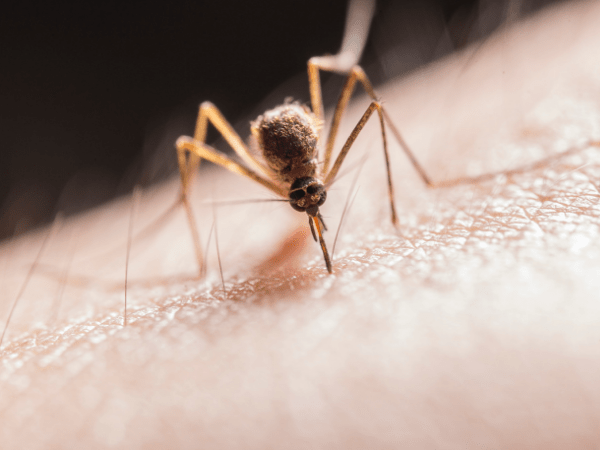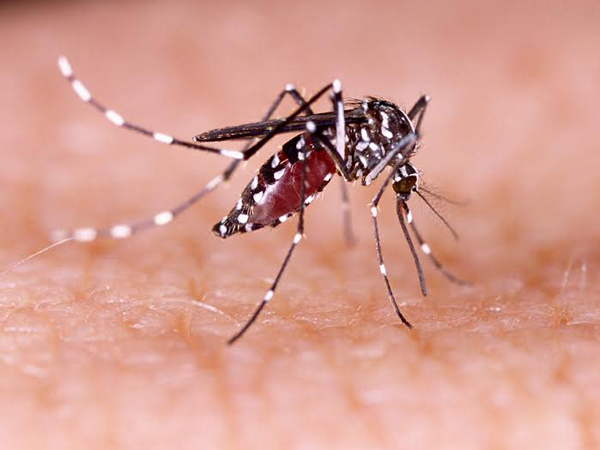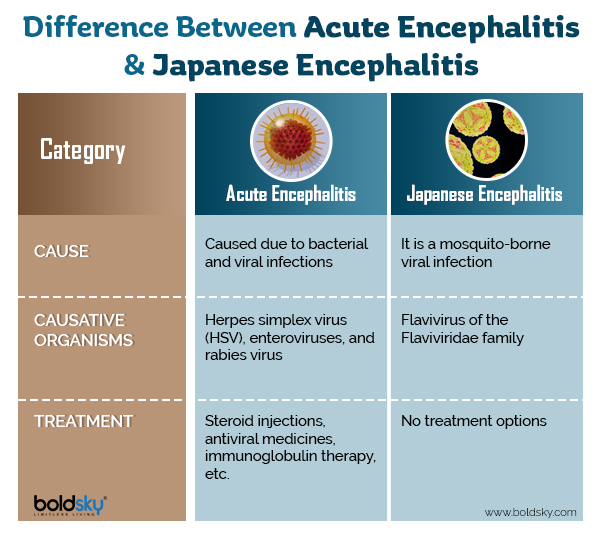Just In
- 1 hr ago

- 1 hr ago

- 7 hrs ago

- 10 hrs ago

Don't Miss
- Finance
 5 Bonus, Rs 28/Sh Dividend: IT Giant Infosys Beats Estimates In Q4FY24, But ADR Falls Sharply; Here's Why!
5 Bonus, Rs 28/Sh Dividend: IT Giant Infosys Beats Estimates In Q4FY24, But ADR Falls Sharply; Here's Why! - Sports
 Who Won Yesterday's IPL Match 33? PBKS vs MI, IPL 2024 on April 17: Mumbai Indians Escape Last-Ditched Fight by Punjab Kings To Win
Who Won Yesterday's IPL Match 33? PBKS vs MI, IPL 2024 on April 17: Mumbai Indians Escape Last-Ditched Fight by Punjab Kings To Win - Movies
 Do Aur Do Pyaar OTT Release Date & Platform: When & Where To Watch Vidya Balan’s Film After Theatrical Run?
Do Aur Do Pyaar OTT Release Date & Platform: When & Where To Watch Vidya Balan’s Film After Theatrical Run? - News
 BRS Chief K Chandrasekhar Rao Slams BJP, Says K Kavitha's Arrest Is Vendetta Politics
BRS Chief K Chandrasekhar Rao Slams BJP, Says K Kavitha's Arrest Is Vendetta Politics - Automobiles
 Aprilia RS 457 Accessories: A Detailed Look At The Prices
Aprilia RS 457 Accessories: A Detailed Look At The Prices - Education
 Karnataka SSLC Result 2024 Soon, Know How to Check Through Website, SMS and Digilocker
Karnataka SSLC Result 2024 Soon, Know How to Check Through Website, SMS and Digilocker - Technology
 Nothing Ear, Ear a With ANC, Up to 42.5 Hours of Battery Launched; Check Price and Availability
Nothing Ear, Ear a With ANC, Up to 42.5 Hours of Battery Launched; Check Price and Availability - Travel
Telangana's Waterfall: A Serene Escape Into Nature's Marvels
Japanese Encephalitis Causes 48 Deaths In Assam: What You Should Know About The Disease
In Assam, the outbreak of Japanese encephalitis has caused 48 deaths so far, with the state government taking all proactive steps to control the situation. Most of the upper Assam districts, including Golaghat, Jorhat, Dibrugarh, Lakhimpur and the lower Assam district of Kamrup have been affected by the mosquito-borne disease.

What Is Japanese Encephalitis?
Japanese encephalitis is a mosquito-borne viral infection [1] . It is the leading cause of viral encephalitis in Asia with an estimated 68,000 clinical cases reported every year, according to the World Health Organization (WHO).
Flavivirus that causes Japanese encephalitis, belongs to the Flaviviridae family. It is the same genus of viruses responsible for the yellow fever and dengue [2] .

What Causes Japanese Encephalitis
The Culex mosquito transmits the virus to humans and they become the carriers of the virus. The mosquito can infect animals too. Wild birds and domestic pigs are likely to be the natural hosts of Japanese encephalitis, and mosquitoes are the vectors.

Symptoms Of Japanese Encephalitis
Japanese encephalitis has no symptoms. However, if there are symptoms, they will appear 5 to 15 days after being infected. A person with mild Japanese encephalitis might get symptoms like headache and a fever.
But in serious cases the symptoms are as follows:
- Headache
- Fever
- Nausea
- Vomiting
- Tremors
- Stiff neck
- Spastic paralysis
There might be changes in the brain function as well, causing coma, stupor, disorientation, and convulsions in children. These symptoms could lead to lifelong complications like deafness, weakness on one side of the body, and uncontrollable emotions.
Risk Factors Of Japanese Encephalitis [3]
- Children are more likely to get affected by the virus.
- In temperate regions, the transmission of the virus is higher during the summer and early fall season, usually between May and September.
- In tropical areas, virus transmission might happen at any time of the year.
- In subtropical and tropical areas, the season depends on the rainfall and the patterns of bird migrations.
- Japanese encephalitis is more common in areas where people grow rice.

Diagnosis Of Japanese Encephalitis
The doctor will examine the symptoms, if there are any and check where the person lives. He/she might ask about the places they visited from where the recent infection could have emerged.
If the disease is suspected, the patient will undergo tests like an MRI scan and a CT scan [4] . The physician also might use a lumbar puncture to draw fluid from the spine, to verify the virus.
To detect human antibodies, immunofluorescence tests are done with the help of a fluorescent chemical.
Treatment Of Japanese Encephalitis
According to the World Health Organization (WHO), there is no antiviral treatment for patients with this disease. Antibiotics are only available to relieve you from the symptoms.
Prevention Of Japanese Encephalitis
To prevent Japanese encephalitis, one should get a vaccination and use an insect repellent.
Vaccination [5]
The vaccination consists of two doses which are given through injections.
The second dose will be given 28 days after the first dose. An accelerated vaccination schedule is possible, in which only 7 days pass between the two doses and it's safe for people between 18 and 65 years of age.
The vaccination for Japanese encephalitis can cause short-term side effects like headache, muscle pain, red, swollen, and sore skin at the site of injection, hives, and breathing difficulties.
Doctors recommend vaccination for the following people:
- People who are travelling to areas where the disease is endemic.
- People who go for short-term trips lasting less than a month.
- People visiting areas where there is an outbreak.
- People participating in outdoor activities in an endemic area.
Other
ways
to
prevent
Japanese
encephalitis
are
as
follows:
- People who spent most of the time outdoors in the rural areas should use mosquito nets and wear protective clothing.
- Remove accumulated standing water nearby your house, as it is the breeding ground for mosquitoes.

- [1] Solomon, T., Dung, N. M., Kneen, R., Gainsborough, M., Vaughn, D. W., & Khanh, V. T. (2000). Japanese encephalitis.Journal of Neurology, Neurosurgery & Psychiatry,68(4), 405-415.
- [2] Mackenzie, J. S., Gubler, D. J., & Petersen, L. R. (2004). Emerging flaviviruses: the spread and resurgence of Japanese encephalitis, West Nile and dengue viruses.Nature medicine,10(12s), S98.
- [3] Libraty, D. H., Nisalak, A., Endy, T. P., Suntayakorn, S., Vaughn, D. W., & Innis, B. L. (2002). Clinical and immunological risk factors for severe disease in Japanese encephalitis.Transactions of the Royal Society of Tropical Medicine and Hygiene,96(2), 173-178.
- [4] Kalita, J., & Misra, U. K. (2000). Comparison of CT scan and MRI findings in the diagnosis of Japanese encephalitis.Journal of the neurological sciences,174(1), 3-8.
- [5] Oya, A. (1988). Japanese encephalitis vaccine.Pediatrics International,30(2), 175-184.
-
 pregnancy parentingWhite Lung Syndrome: What Are The Symptoms Of The Disease Rampant In China? How Does It Spread?
pregnancy parentingWhite Lung Syndrome: What Are The Symptoms Of The Disease Rampant In China? How Does It Spread? -
 healthWorld HIV/AIDS Day: What Is The Difference Between HIV and AIDS?
healthWorld HIV/AIDS Day: What Is The Difference Between HIV and AIDS? -
 healthDengue 101: Causes, Symptoms, Risks, Complications, Treatment, Prevention, Diet And More
healthDengue 101: Causes, Symptoms, Risks, Complications, Treatment, Prevention, Diet And More -
 healthDiarrhoea 101: Causes, Symptoms, Risks, Complications, Treatment, Prevention, Diet And More
healthDiarrhoea 101: Causes, Symptoms, Risks, Complications, Treatment, Prevention, Diet And More -
 health'Epileptic Nightmare' of Neurocysticercosis: The Hidden Epidemic of Parasites Causing Epilepsy
health'Epileptic Nightmare' of Neurocysticercosis: The Hidden Epidemic of Parasites Causing Epilepsy -
 pregnancy parentingLife-Threatening Risk During Pregnancy: Sepsis Can Harm Both Mother and Baby
pregnancy parentingLife-Threatening Risk During Pregnancy: Sepsis Can Harm Both Mother and Baby -
 healthStay Informed: The Hidden Dangers of Legionnaires' Disease and How to Prevent It
healthStay Informed: The Hidden Dangers of Legionnaires' Disease and How to Prevent It -
 healthMyths vs Facts: Can A Single Mosquito Bite Really Give You Dengue?
healthMyths vs Facts: Can A Single Mosquito Bite Really Give You Dengue? -
 healthTop 5 Reasons For Vaginal Rash: When You Should See A Doctor
healthTop 5 Reasons For Vaginal Rash: When You Should See A Doctor -
 healthCan Inhaling Menthol Help Improve Memory For Alzheimer's Disease?
healthCan Inhaling Menthol Help Improve Memory For Alzheimer's Disease? -
 healthWorld Vitiligo Day 2023: Are You At Risk Of Developing Vitiligo?
healthWorld Vitiligo Day 2023: Are You At Risk Of Developing Vitiligo? -
 beautyFather's Day 2023: Stretch Marks In Men, Causes And Treatments
beautyFather's Day 2023: Stretch Marks In Men, Causes And Treatments


 Click it and Unblock the Notifications
Click it and Unblock the Notifications



